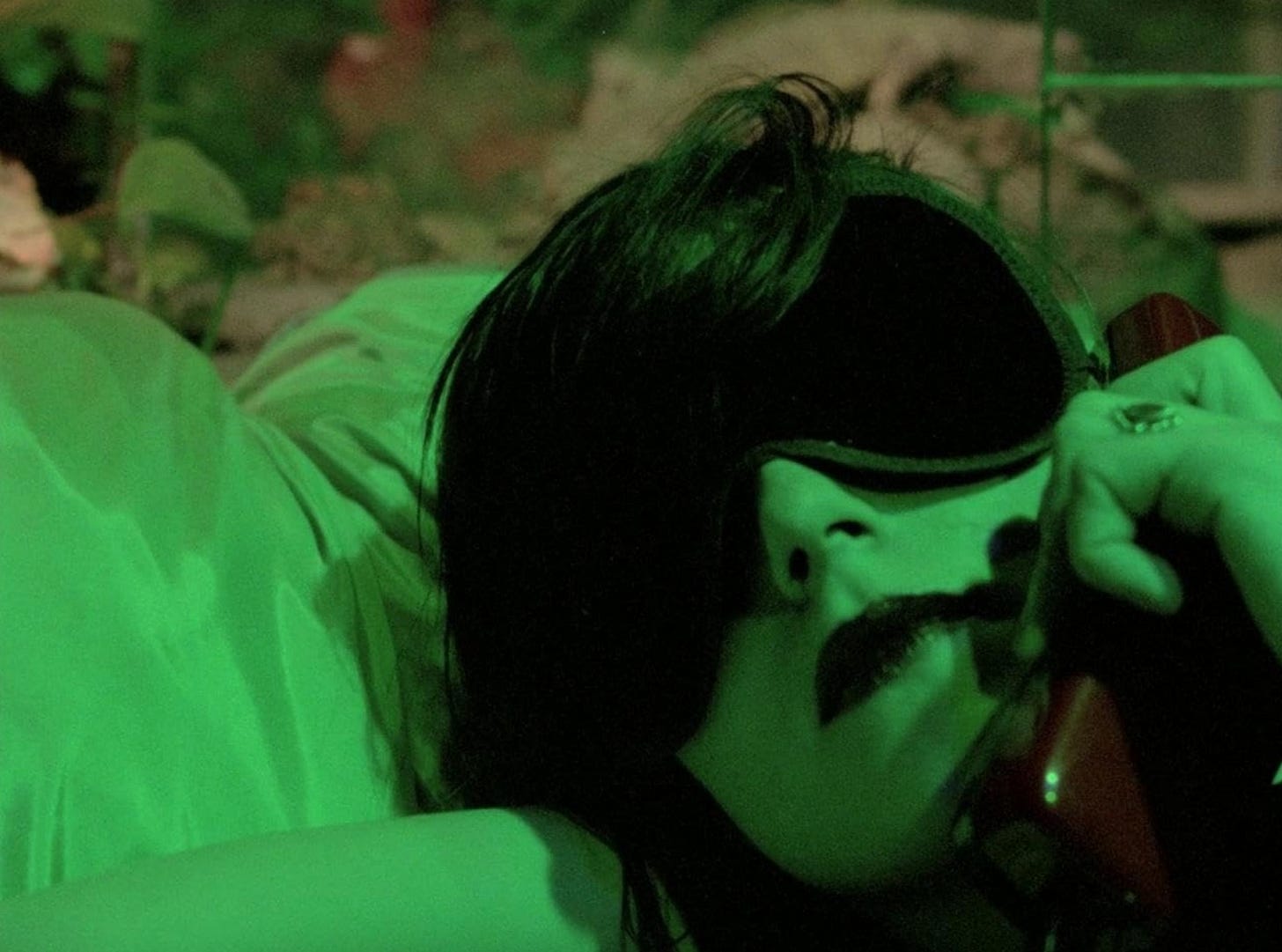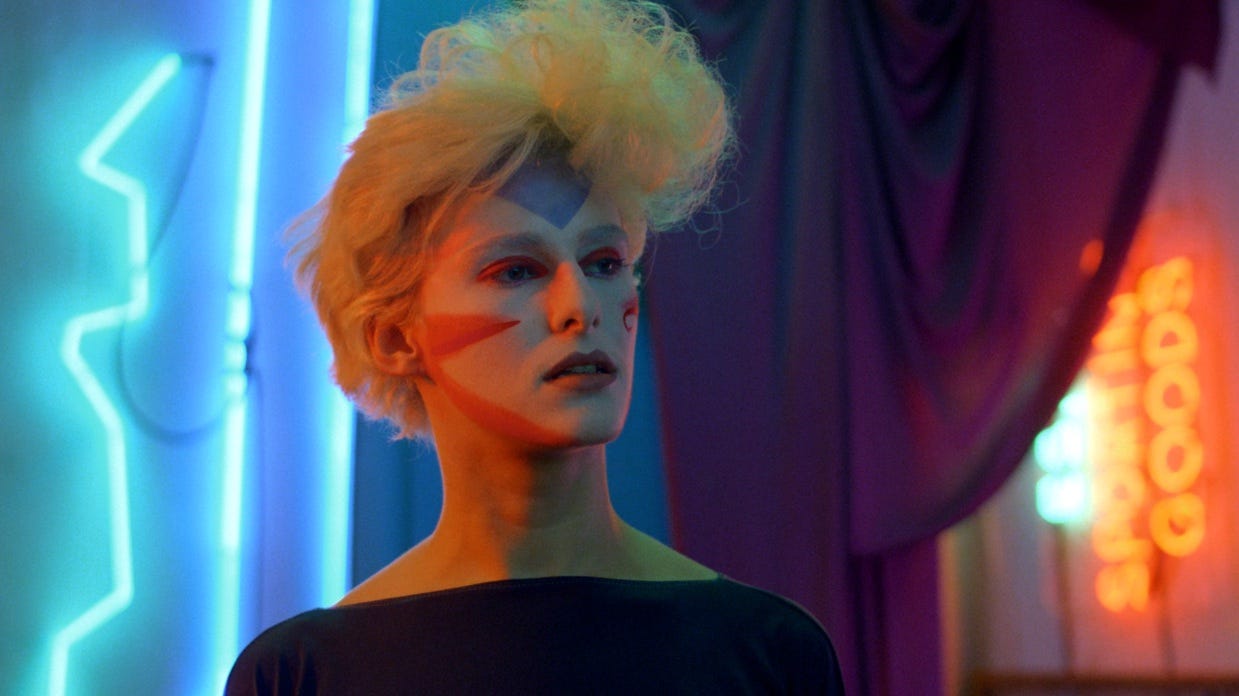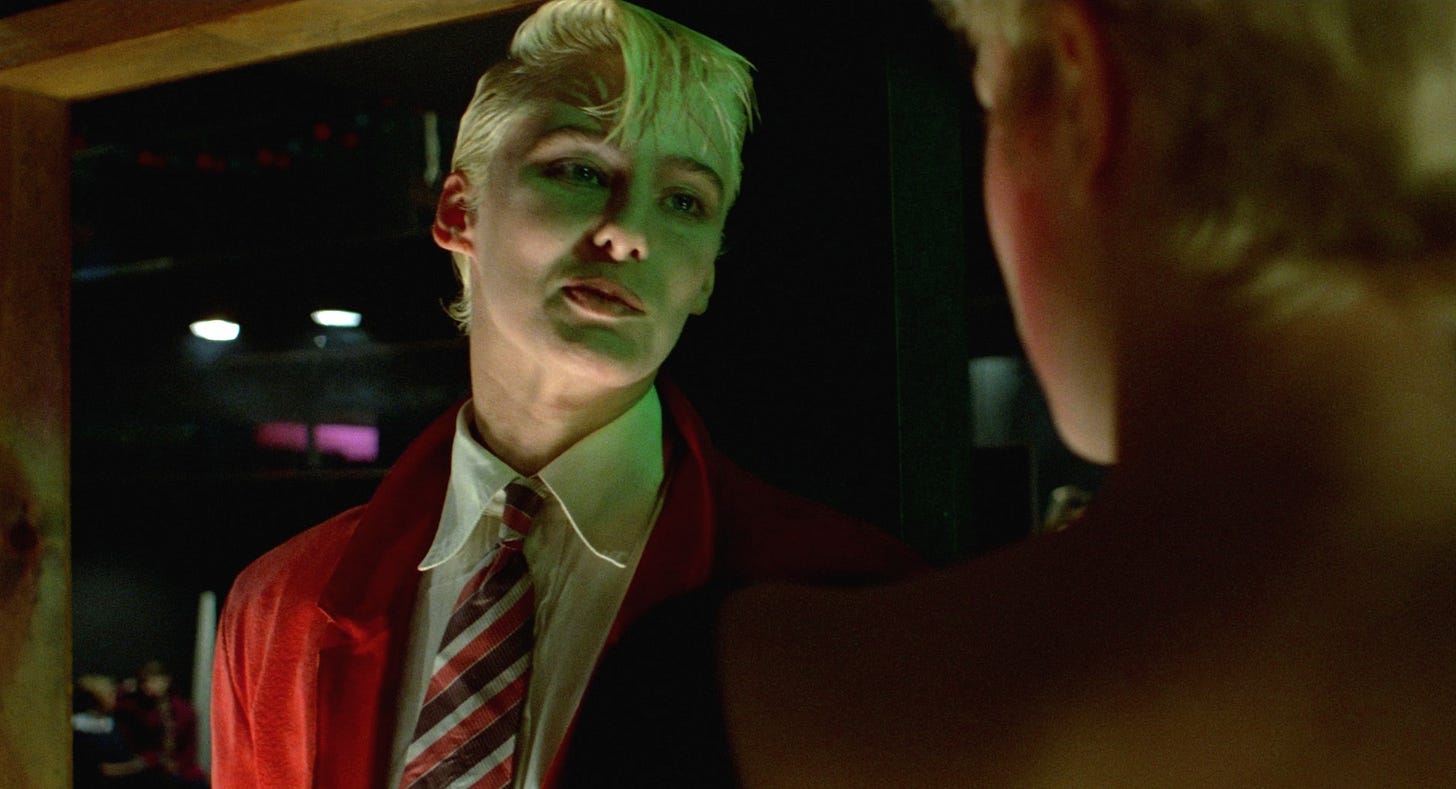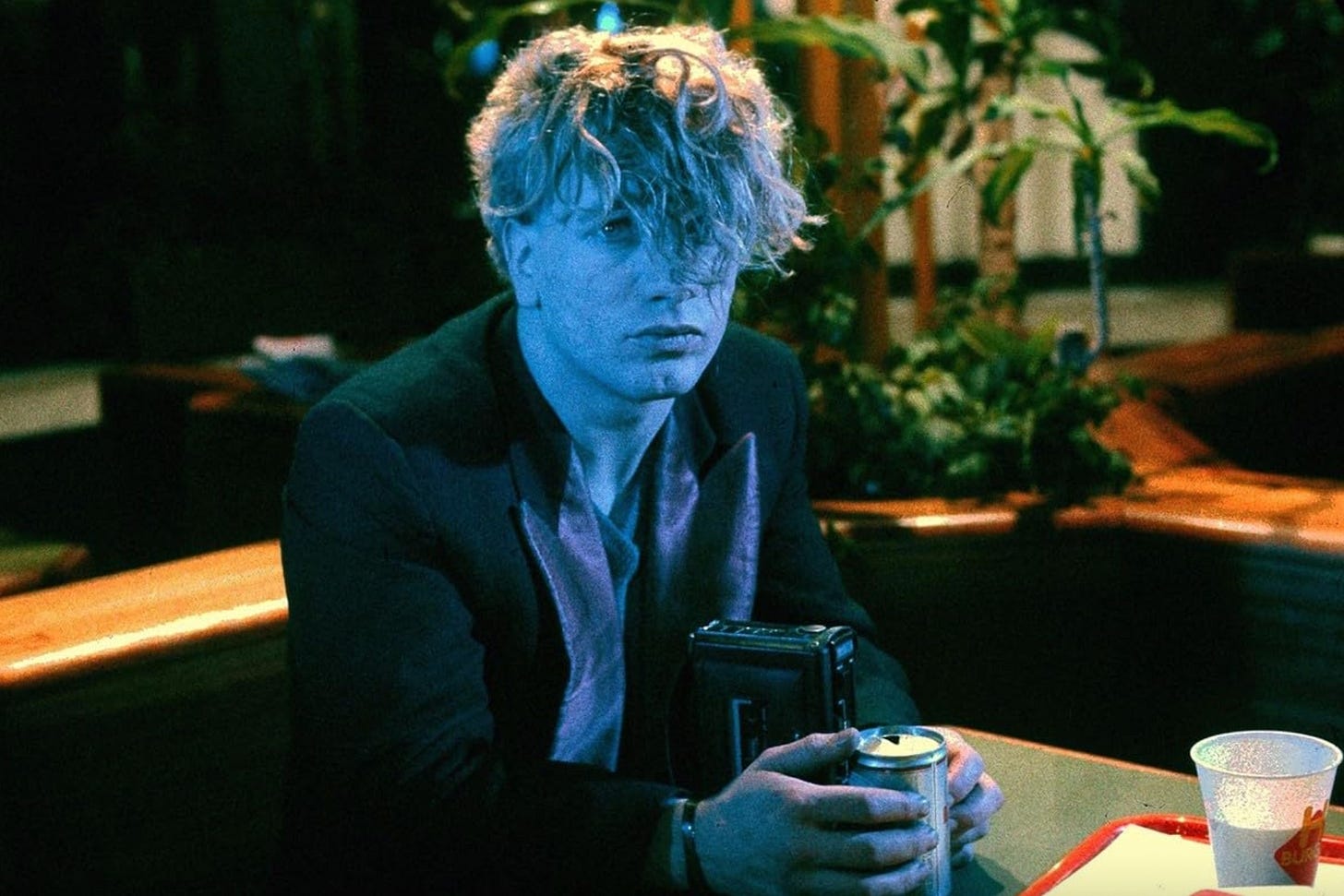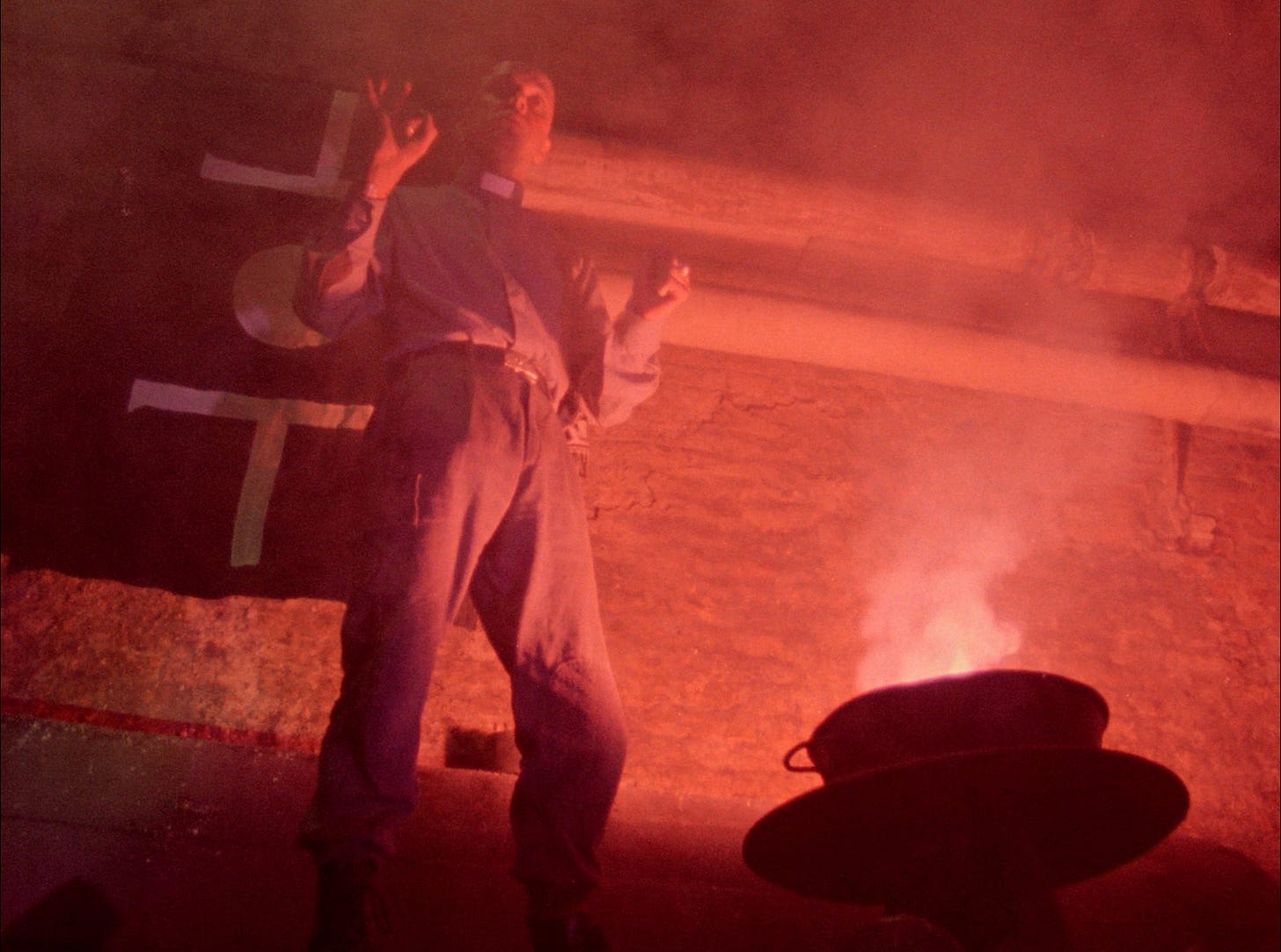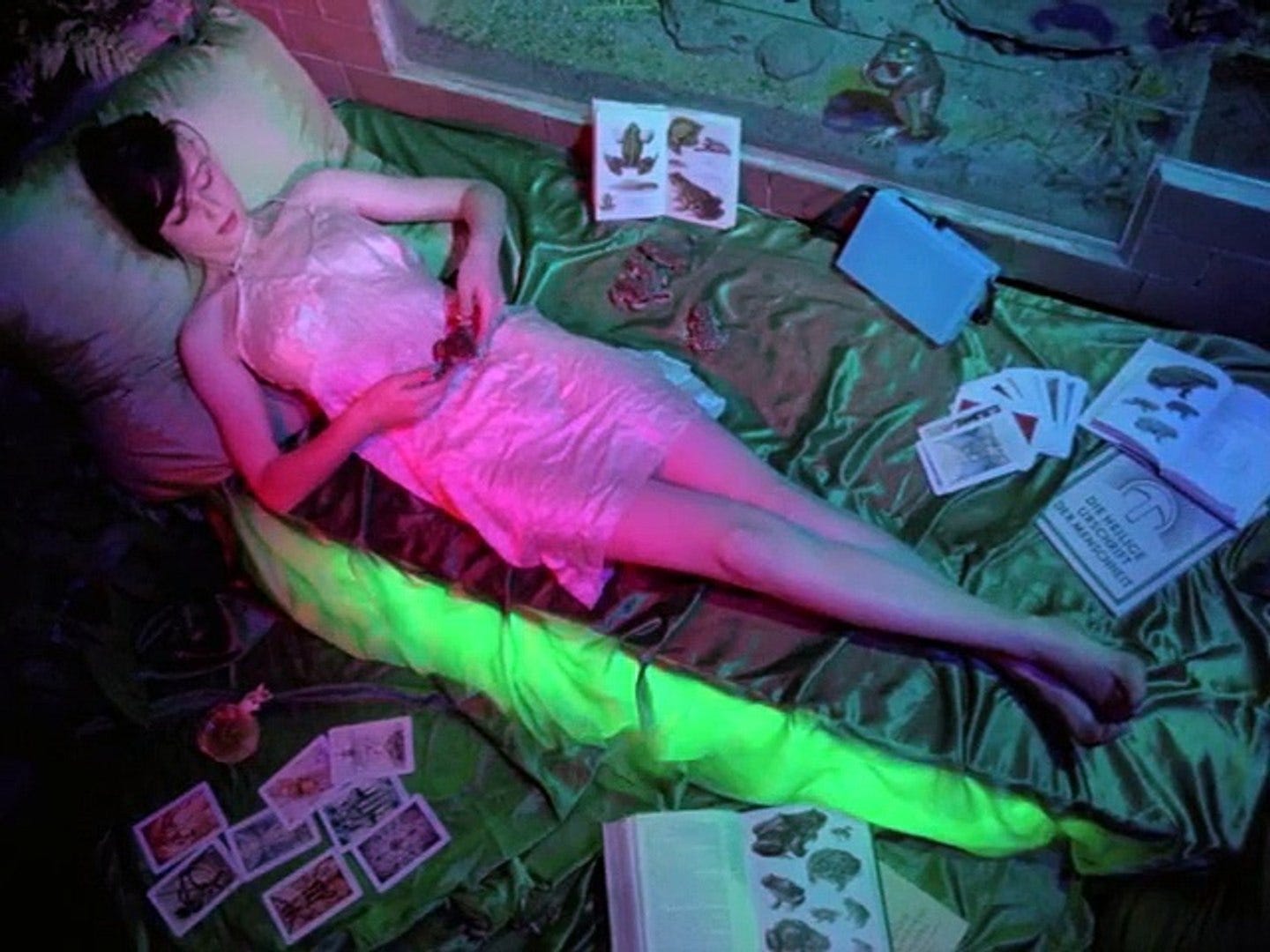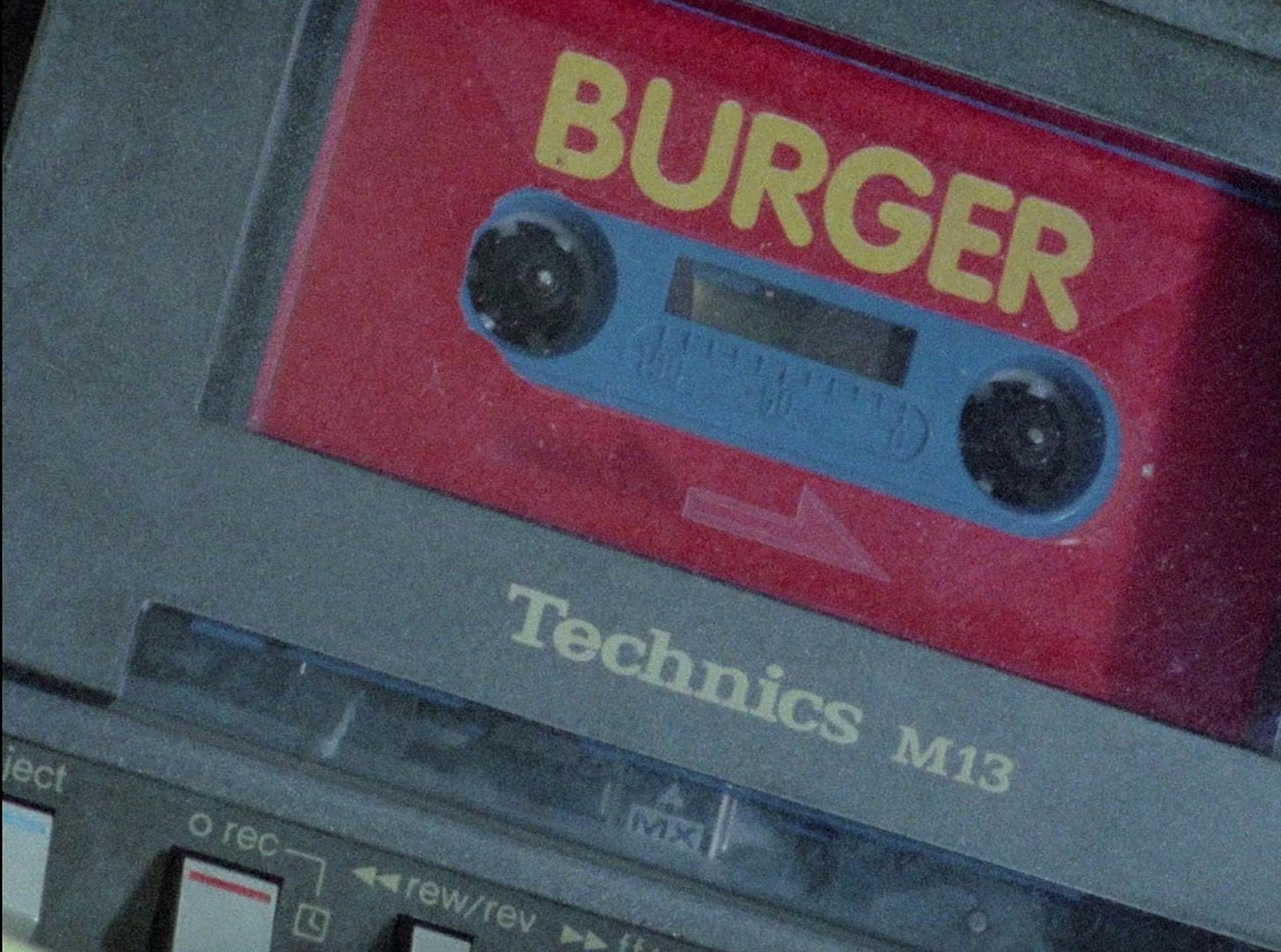There is something innately cinematic about the writing of William S Burroughs. Many segments of his work read like a script with dialog and scene directions. His cut up technique--in which he would cut up various written pages and paste them back together at random--has similarities to structuralist avant garde film editing. His writing often seems like it is more than just words, but a succession of images in front of us. In Naked Lens, Jack Sargeant writes, “Almost as soon as William S Burroughs’ seminal opus Naked Lunch was lionized, first as a temporarily ‘obscene and bogus’ book and later as a permanently ‘revered’ literary classic, both he, Brion Gysin, Antony Balch and Ian Sommerville had conceived of it as becoming an epic ‘beatnik’ movie.” (181) The book would finally be adapted by David Cronenberg in the early 1990s, but before that there were numerous instances of Burroughs dabbling in the moving image. Far more than that, his pervasive influence could be seen tangentially in many movies.
One of the first instances of Burroughs on film is Conrad Rooks’ Chappaqua, which won The Silver Lion at the 1966 Venice Film Festival. It is markedly different from something the author would have written, although it shares the common thread of drug addiction. The protagonist Russel Harwick--an apparent autobiographical stand-in for Rooks--goes to a clinic to detoxify himself from alcohol and other substances. While there he meets a phantasmic man in a top hat played by Burroughs who acts as a gatekeeper, puppet master, drug dealer, and vampire, all in a nightmarish maze of shifting hallucinations. Chappaqua is certainly an art film that gained international attention, but it frequently references exploitation cinema. At one point the protagonist says, “What kind of logic can you have at 18? My logic was the logic of American movies, motorcycles, speed, 42nd Street.” Among the delirious super-impositions we see 42nd Street marquees for Fellini’s Juliet of the Spirits (1965) and the exploitation classic Olga’s House of Shame (1964). The movie partakes in one of the most significant aspects of Burroughs’ work and beatnik culture at large: the mixture of inaccessible high art and the lowest of sleaze and vice. By the 1970s his involvement with movies would move into expanded cinema performance and a growing influence on countercultural movements.
Burroughs was soon adopted by a number of subcultures that were predominantly based in music. He coined the term “Heavy Metal” which was eventually used to describe the genre we know today. The punk rockers loved him, and his influence was also seen in industrial culture, with Genesis P-Orrige becoming an archivist for the writer and his inner circle. When talking about Burroughs’ influence on cinema, some would say Van Sant or Cronenberg might be the obvious examples to bring up, but two films from the early 1980s, Liquid Sky (1982) and Decoder (1984) are the movies that endure as fully formed Burroughs exponents. Slava Tsukerman’s Liquid Sky follows the exploits of a few new wave hipsters who are overwhelmed by heroin and space aliens. Decoder--credited to Muscha, but made collaboratively--takes directly from the writer’s work to tell a story about dystopian muzak companies and the audio rebellion that ensues. These two movies distill a mood that has been difficult to capture before or since.
Liquid Sky is a combination of three or four story elements that come together to create an entirely unique work of art. Shot on location in New York City, it has a neon grittiness to it which is native to that time and place. Through fast-motion cinematography and angles from the rooftops, the city is amplified in a way that is made even more frantic by the bizarre synth soundtrack. The movie has a full ensemble of characters, but focuses on two, both played by Anne Carlisle. Margaret is a jaded new wave scenester who is a victim of sexual aggression in multiple scenes from strangers and those close to her. Jimmy is an aimless model whose insecurities are exacerbated by his drug use. Both characters embody a sort of art school beauty (Carlisle went to The School of Visual Arts) that is self-involved, pretentious, but nonetheless captivating.
In the opening scene a tiny flying saucer lands on the roof of Margaret’s apartment seeking the peak of earthly pleasure. As one of Margaret’s antagonists says, “Everybody wants euphoria.” This is true of both the new wave revellers and the aliens. Liquid Sky is rounded out with a dryly humorous German scientist (Otto von Wernherr) who is in search of the aliens, finding a shrimp-obsessed neighbor (Susan Doukas) along the way.
Any attempt to sum up the alien-human conflict in words ends up sounding whimsically incredulous. Reviewing the movie in The New York Times upon its release, Janet Maslin writes, “Occasionally, the film adopts the space creature's point of view. This allows Mr. Tsukerman to introduce high-contrast visuals in red, purple and green, culminating in the explosion of what looks like an electronic meatball. Apparently, this means that the creature is experiencing intense pleasure, which it derives either from heroin or, later, from murdering Margaret's sex partners. All of this, lurid and weird as it may sound, is related in a virtually matter-of-fact manner.” Scholar Yetta Howard sums it up more succinctly, “the victims are speared through the head with a small glass arrow and, eventually, all are vaporized after they have an orgasm.” (41) As joyously strange as these explanations are, the way the actions play out on screen must be experienced in order to understand the intellectual and sensual pleasure of Liquid Sky.
The movie has a certain way of combining sex, drugs, and new wave that alludes to an understanding of Burroughs’ work. The characters are not just rock’n’rollers in the throes of hedonistic excess, but people who are concerned with the more cerebral and philosophical aspects of pleasure. Before shooting up, one of Margaret’s aggressors reveals that the title of the movie is a term for heroin: “Liquid Sky. The key to heaven. The milk of paradise. That’s what they used to call it.” He is saying that humans have been using opiates for hundreds of years. It is sacred and ritualistic, not just a party drug that turns people into mindless fiends. It is the kind of glorification of the substance we have read about in the pages of Naked Lunch, with its vignettes of chaos and caricature. With this glorification comes the misery and pain that is also apparent in the book.
Liquid Sky also caters to the more scientific side of drugs found in the author’s work. When Sylvia presses Johann, the German scientist for clarification, he says: “Not opium, I said nearly the same molecular structure, there’s nearly the same properties. Opium users have said that the drug creates a similar feeling than what people experience during orgasm.” This talk of likening sex to drugs is synthesized into a narrative story through science fiction, much like Burroughs’ writings of transformation and metamorphosis. In the author’s work, the aliens are more likely to come from human bodies, as opposed to outer space, but the vibe is similar.
For example, take Burroughs’ description of one character: “The Buyer takes on an ominous grey-green color. Fact is his body is making its own junk or equivalent. The Buyer has a steady connection. A Man Within, you might say.” A young hustler continues to describe The Buyer: “...he make himself all soft like a blob of jelly and surround me so nasty. Then he gets wet all over like with green slime.” (15) No human character in Liquid Sky could fit this description, but The Buyer reminds me of the vaporizing alien transformation. To return to Maslin--“...high-contrast visuals in red, purple and green, culminating in the explosion of what looks like an electronic meatball.” In Naked Lunch, the monstrous pleasure fix is coming from inside the house, whereas in Liquid Sky it is something cosmic.
The queer gender and sexuality of the movie is another parallel with Burroughs, but also where it makes a departure from the author. The cut up vignettes that make up parts of Naked Lunch and other books like The Soft Machine (1961) and The Ticket That Exploded (1962) cover all manner of sexual pairings, but perhaps because of the author’s own preferences, masculine gay sex is most prevalent. It would be a step too far to call it hypermasculine, simply because that kind of identity is always foiled by heroin or junk sickness. Although he was married to a woman for a time, Burroughs’ close friends and interior world were mostly homosocial. He famously murdered his wife Joan Vollmer while attempting to shoot a glass off the top of her head at a party, which has since become a living--or dead--metaphor for his relationship to femininity. He is far more associated with the titular Wild Boys of his 1971 novel.
Liquid Sky is a story that is more about femininity and androgyny. When director Tsukerman and lead actor Carlisle began writing the script, the director’s wife Nina Kerova was writing a script about female orgasms at the same time, as detailed in Interview Magazine’s history of the movie. This influenced Liquid Sky, but not exactly in a way that would be considered feminist. As Yetta Howard writes, “While all of Margaret’s sex partners literally become ‘‘pleasure victims,’’ Margaret’s lesbian body itself becomes a dystopian landscape…” (43) The movie is not positing some kind of progressive story of empowerment, but rather one of ambitious transgression, which had a quick but powerful moment in underground cinema of New York City in the 1980s. The many rape scenes of the movie, which become exhausting by the end, point to a far earlier influence who also affected Burroughs--French Revolution era political pornographer, The Marquis de Sade. Incidentally, Grove Press published both Burroughs and Sade in the 1960s, fighting charges of obscenity along the way.
Although Liquid Sky has many similarities to Burroughs’ writing and aesthetics, Slava Tsukerman and Anne Carlisle have never discussed him as an influence (let me know if there is a source that says otherwise). In contrast, the West German movie Decoder not only cites the writer as an influence, but features him in one scene. Decoder tells the story of FM (Einstürzende Neubauten’s FM Einheit), an industrial noise artist who discovers that the muzak at fastfood chain H-Burger is pacifying its patrons into submission. He joins a strange cult-like group who aims to overthrow corporate muzak companies, fastfood culture, and apparently the government by using handheld tape recorders loaded with riot sounds in order to produce riots. As all of this is going on, FM engages in a subplot having to do with his frog-loving sex worker girlfriend Christiana (Christiane Felscherinow), who is being stalked by Jäger (Bill Rice), a creepy older spy. Jack Sargeant writes, “Decoder presents a uniquely political interpretation of Burroughs’ work and--via the use of Burroughs in the film’s dream sequences--directly attributes the narrative’s central concerns to Burroughs’ tape recorder experiments.” (200) It was not necessarily the author’s fiction that compelled the makers of the movie, but his 1970 essay “The Electronic Revolution” that specifically posits a collective mass of recorded sound as a protest tool. Decoder is a fascinating piece of protest cinema, in that it is a fictional test run for how this kind of resistance would play out. All this occurs among various aurally and visually jarring sequences that show a half-real sci fi underground of Berlin in the early 1980s.
In addition to a dream sequence in which FM goes to an electronic repair shop and gets advice from Burroughs, we get a gritty scene of audio cultists communing with their High Priest, played by Throbbing Gristle/Psychic TV band member Genesis P-Orrige. Through a series of connections, P-Orrige was the caretaker of a large amount of celluloid movie footage that Burroughs and company shot in the 1960s and 70s. It is therefore appropriate for him to appear as this cult-like figure in Decoder, who makes the memorable speech: “Information is like a bank, some of us are rich, some of us are poor for the information. All of us can be rich. Our job, your job is to rob the bank, to kill the guards. To go out there and destroy everybody who keeps and hides the whole information.” This notion goes back to Burroughs’ writings, in which he understood that those who control the flow of information are the ones with the most power. In the movie, this cult is presented in an unexpectedly similar way to “The New World”, the nihilist/fascist cult seen in George P Cosmatos’ action movie Cobra (1986) released a couple of years later. Although the group in Decoder doesn’t have dual axes that they smash together symbolically, they do have fire pits inside of a cavernous, dystopian industrial building. P-Orrige, as their leader, looks like a mixture of Aleister Crowley and a Nazi SS officer. As FM moves to a room further in the back, he discovers a hypnotic dream machine, the device created by Burroughs associate Brion Gysin that induces hallucinogenic states of higher consciousness.
Something not often discussed is the indirect relation Decoder has to the cinema of Rainer Werner Fassbinder. Made a couple years after RWF’s death, Decoder’s preoccupation with technology and how it can be used for political control has some things in common with The Third Generation (1979, which I wrote about at length last year). That movie is far more about how the ruling class and governmental entities use technology for surveillance, thus controlling the opposition. Decoder acts as an answer to that, where we see the possibility of the resistance using technology as a tool to fight back against state oppression. The science fiction feel of the movie can also be related to RWF’s two-part TV mini-series World on a Wire (1973), which anticipated the dystopian aspects of the internet and social media. It is full of conspiratorial electronic transmissions which bring into question intelligence and control in German society at that time. From a purely aesthetic standpoint, Decoder also has similarities to In a Year with 13 Moons (1978)--both movies show the presence of arcade games as part of culture at that time, and specifically how the electronic audio can be charming and maddening the longer it is listened to. The manager of H-Burger is played by actor Matthias Fuchs, who was in a number of late-period Fassbinder productions like Lola (1981) and an episode of Berlin Alexanderplatz (1980). His presence is a reminder of RWF’s cinematic world. If all of these relations to the director seem coincidental, he is brought into the diegesis of the Decoder, revealing the awareness of the makers--when the protesters are mobilizing their tape recorders, news of Fassbinder’s death can be heard over the loudspeakers on the subway.
Perhaps what relates Decoder specifically to Liquid Sky is the doubling of the lead female characters. This technique is most apparent in Liquid Sky, where Anne Carlisle plays both Margaret and Jimmy. It lends an androgynous queerness to the film in a way that is clever and compelling. This doubling implicitly ends up being about sexuality when Margaret and Jimmy are encouraged to have sex in front of a crew of onlookers. The doubling that occurs in Decoder has to do with Christiana’s persona as a sex worker. While working as a peep show dancer at the delightfully titled Sexy Eye Land, she becomes a completely different person. After she removes the wig and gets dressed again, Jäger, her stalker, is unable to recognize her. This also has referential significance outside of the movie, in that Christiane F, the person playing the role, was famous in Germany at the time for a book she wrote about her childhood as a prostitute and drug addict. Danielle Burgos writes, “At a juncture in her life where she was trying to escape the shadow of past notoriety while leveraging it into something useful, her character’s double identity as peep-show vamp and insular misanthrope came from the red-light district itself. Ogled without being known, Christiana prefers the company of frogs. The peep-show box she revolves around in resembles Burroughs’s recommended orgone accumulators, units designed by researcher Wilhelm Reich to collect universal sexual life force from the ether and bestow it on the person within.” Aren’t the aliens in Liquid Sky also collecting universal sexual life force as their main purpose in being on Earth? Christiane F’s drug-addled past also brings the comparison of the two movies full circle, with Liquid Sky’s constant preoccupation with heroin.
Liquid Sky and Decoder are movies that shed the stereotypical trappings of Beat culture of the 1950s and 60s in order to evolve into a distinctly 1980s, science fiction beatnik aesthetic. The work of William S Burroughs is an indelible influence on both pictures. Writer/producer of Decoder Klaus Maeck states, “I didn’t like Burroughs as a writer or artist, I liked him as a revolutionary.” (Sargeant, 201) The relation of the two movies to the writer goes beyond just aesthetics and into the boundary-breaking revolutionary potential of the work. Filmmakers like Gus Van Sant and David Cronenberg are frequently thought of as the cinematic successors to Burroughs, but Liquid Sky and Decoder are two movies that stand on their own in the greater sci fi beatnik universe. Both of these movies are also relatable to Cronenberg in that they have to do with the effects of drugs and/or technology on human bodies. Moving forward, this writing series on Beatnik Pictures will naturally advance into a series on the influence of Burroughs on the films of David Cronenberg.
Burgos, Danielle. “Low Tech, High Paranoia” Metrograph.com Published: April, 2022. Accessed: September 2, 2025. https://metrograph.com/low-tech-high-paranoia/
Burroughs, William S. “The Electronic Revolution”, 1970. Accessed September 13, 2025 https://www.swissinstitute.net/2001-2006/Images/electronic_revolution.pdf
Burroughs, William S. Naked Lunch. New York: Grove Press, 1959, 2001.
Howard, Yetta. “Alien/ating lesbianism: Ugly sex and postpunk feminist dystopia in Liquid Sky” Routledge: Women & Performance: a journal of feminist theory Vol. 21, No. 1, March 2011, 41–61. Accessed: August 30, 2025
Kelsey, Colleen. “A brief history of neon-soaked cult film Liquid Sky” Interview Magazine. Published April 16, 2018. Accessed: September 1, 2025. https://www.interviewmagazine.com/film/brief-history-neon-soaked-cult-film-liquid-sky
Maslin, Janet. “'Liquid Sky, High Fashion and a U.F.O.” New York Times. Published: July 22, 1983. Accessed: August 30, 2025. https://www.nytimes.com/1983/07/22/movies/liquid-sky-high-fashion-and-a-ufo.html#
Sergeant, Jack. Naked Lens: Beat Cinema London: Creation Books, 1997, 2008.


